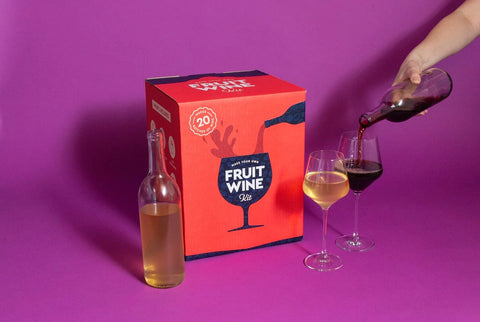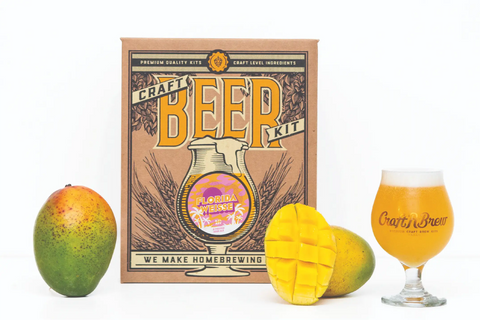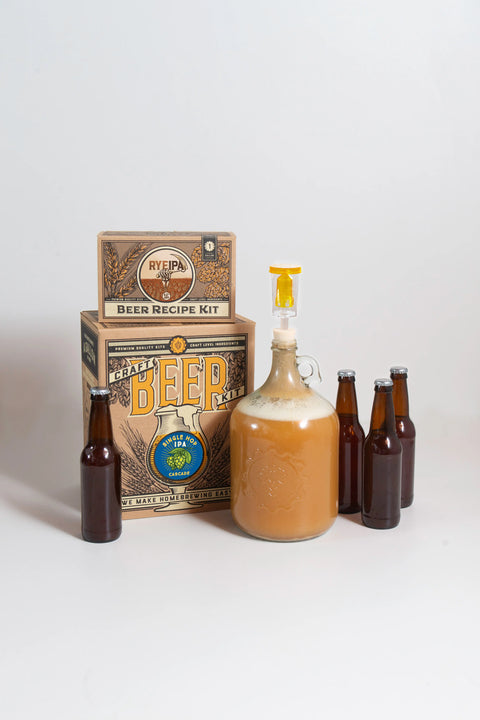When it comes to sweet vs dry wine, the difference comes down to sugar. Specifically, how much sugar is left in the wine after fermentation — also known as residual sugar (RS) — or how much sugar is added after fermentation (backsweetening). For home winemakers, learning to manage sugar in homemade wine is the key to achieving your preferred flavor, body, and balance. Whether you want to learn how to make sweet wine or how to make dry wine, controlling fermentation and sugar adjustments will get you there.
TL;DR: Sweet vs Dry Wine
-
Sweet wine: Higher residual sugar (RS) left after fermentation or added post-fermentation = sweeter taste, fuller body.
-
Dry wine: Nearly all sugars fermented out by yeast = crisp, tart, less sweet.
-
What controls it: Yeast strain choice, fermentation length, and backsweetening wine.
-
Winemaker’s tools: Hydrometer readings, stabilization, and sugar adjustments give you full control.
Sweet vs Dry Wine: What’s the Difference?
The main difference between dry wine vs sweet wine taste is sugar:
-
Dry wine: Fermented until yeast consumes nearly all sugars, leaving <1% residual sugar. These wines tend to be crisp, sometimes sharp, with more emphasis on acidity and tannins. They often feel thinner bodied on the palate.
-
Sweet wine: Either the yeast can’t consume all of the sugar, or sugar is added back later through backsweetening wine. Residual sugar typically sits above 3%, creating a richer, fuller, dessert-like profile.
Residual sugar doesn’t just affect sweetness. It also impacts:
-
Body (dry wines = thinner, sweet wines = fuller)
-
Alcohol content (dry wines often ferment longer and more completely, reaching higher alcohol by volume)
How to Make Dry Wine at Home
If you love crisp, acidic and refreshing wines, here’s how to make dry wine successfully:
-
Choose a strong, high-attenuating yeast strain. Attenuation refers to the degree to which yeast consumes sugars in a wine. High attenuation = more sugars converted into alcohol.
-
EC-1118 (Champagne yeast) – ferments aggressively and more completely, leaving very little sugar after fermentation is done.
-
Premier Cuvee – another high attenuating strain for dry wines. Let fermentation run to completion: Don’t rush it. Yeast needs time to fully consume sugars.
-
Ferment wine longer. Dry wines can taste sharper when young, so give them time to mellow. The acidity and tannins smooth out beautifully with a little patience.
How to Make Sweet Wine at Home
Prefer a dessert-style or fruit-forward wine? Here’s how to do it safely and effectively:
-
Select the right yeast strain:
-
Red Star Cote des Blancs – a slower fermenting strain that leaves behind residual sugar for softer, sweeter wines.
-
Lalvin 71B – reduces harsh malic acid and sets a smooth foundation for added sweetness.
-
Sweet Mead Yeast – ideal for naturally sweet, rounder results.
-
Stabilize & backsweeten after fermentation:
While your first instinct might be to just add more sugar to your wine, this is actually counterintuitive. Yeast will simply ferment any added sugar into alcohol, drying out the wine. The safest way to add sugar to a wine is with stabilizers
-
Allow fermentation to fully finish.
-
Add stabilizers (like potassium sorbate and a Campden Tablet) to inhibit yeast activity.
-
Let wine stabilize for 24 hours before adding sugar, honey, or fruit juice to sweeten.
-
Adjust sugars to taste, bottle as usual.
⚠️ Important: Never stop fermentation early to stabilize. Stabilizers can not stop yeast in its tracks – they prevent dormant yeast from re-fermenting new sugars. Trying to stop fermentation with stabilizers in effort to sweeten wine will not work and is dangerous. If a wine is not completely finished fermenting before stabilizing, yeast will still continue fermenting in bottles, creating “bottle bombs.”
-
Try different sugar sources for backsweetening wine:
-
White table sugar makes an excellent, neutral sweetener.
-
Honey adds some floral notes and a hint of earthiness.
-
Fruit juice or fruit concentrate are great ways to add natural fruity sweetness to a wine. Concentrate will provide more sugars with less dilution.
Love sweet wines? Learn how to make sweet wine with one of our all-in-one winemaking kits:
-
Moscato Wine Kit – This kit includes additional Moscato wine grape juice & stabilizers for backsweetening.
-
Fruit Wine Kit – This kit includes ingredients to make up to 20 1-gallon batches of wine from your favorite fruits. Includes bulk stabilizers plus instructions + tips for backsweetening based on your desired sweetness level.
-
Juice Box Fruit Wine Kit – This kit helps you turn a gallon of fruit juice into wine. Includes a pre-measured stabilizing packet for streamlined backsweetening.
Yeast Choice and Its Impact
Wine yeast selection directly impacts a wine’s sweetness:
-
High-attenuation yeast (e.g., EC-1118, Premier Cuvee) → Ferments nearly all sugar → dry wines.
-
Low to medium-attenuation yeast (e.g., Cote de Blanc, 71B, Sweet Mead Yeast) → Leaves sugar behind → sweeter wines.
This is why yeast choice is one of the most important tools in controlling wine sweetness.
Tips for Controlling Sugar Levels
Want more precision with sugar in homemade wine? Here are key winemaking tips:
-
Measure with a hydrometer: Tracks sugar levels and ABV potential from start to finish. The “specific gravity” scale tells you how much sugar is present in your wine.
-
Stabilize and backsweeten post-fermentation: Prevent renewed fermentation by treating with stabilizers.
Sweet vs Dry Wine Taste Comparison
|
Feature |
Sweet Wine |
Dry Wine |
|
Residual Sugar |
3%+ |
<1% |
|
Flavor Profile |
Fruity, sweet, fuller-body |
Crisp, tart, less sweet |
|
Food Pairing |
Cheese, dessert, spicy foods |
Meat, pasta, light cheeses |
|
Alcohol Potential |
Often lower (fermentation stopped) |
Often higher (ferments longer) |
Final Verdict
The choice between sweet vs dry wine comes down to preference — and how you manage wine fermentation sugar levels.
-
Go dry if you prefer crisp, refreshing wines with higher alcohol content.
-
Go sweet if you love rich, dessert-like flavors or want to soften acidity with backsweetening.
The best part about home winemaking is control. By experimenting with yeast strains, stabilization methods, and fruit additions for backsweetening, you can fine-tune your perfect balance every time.
👉 Ready to experiment? Browse our full collection of Wine Kits and Winemaking Ingredients for crafting your ideal sweet or dry wine today.





